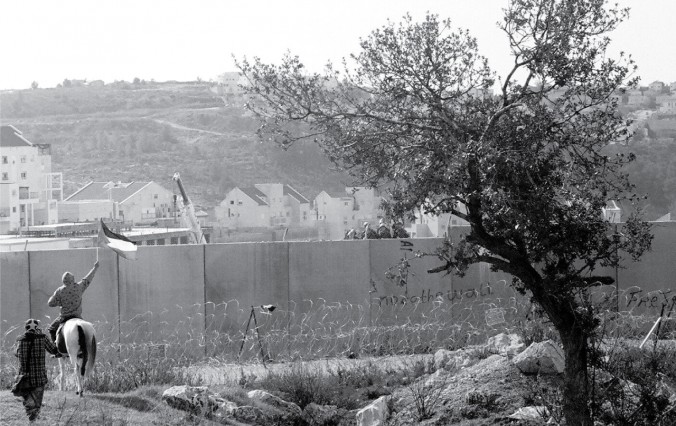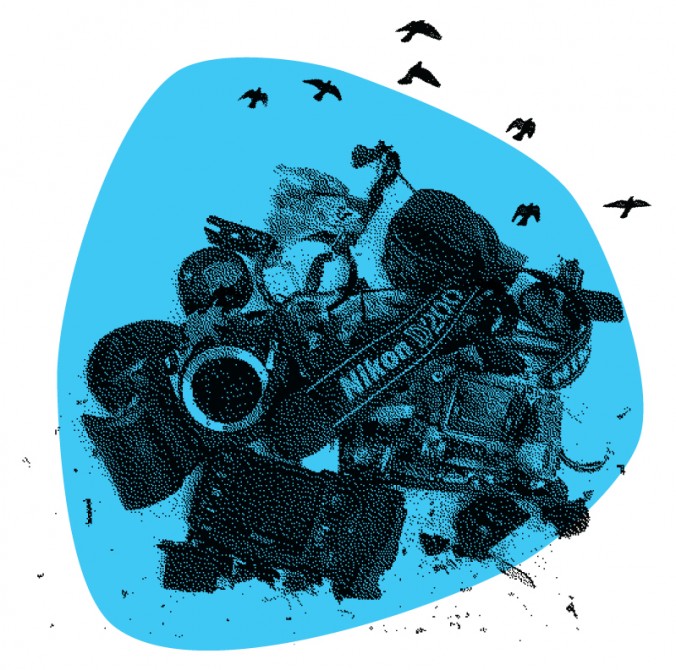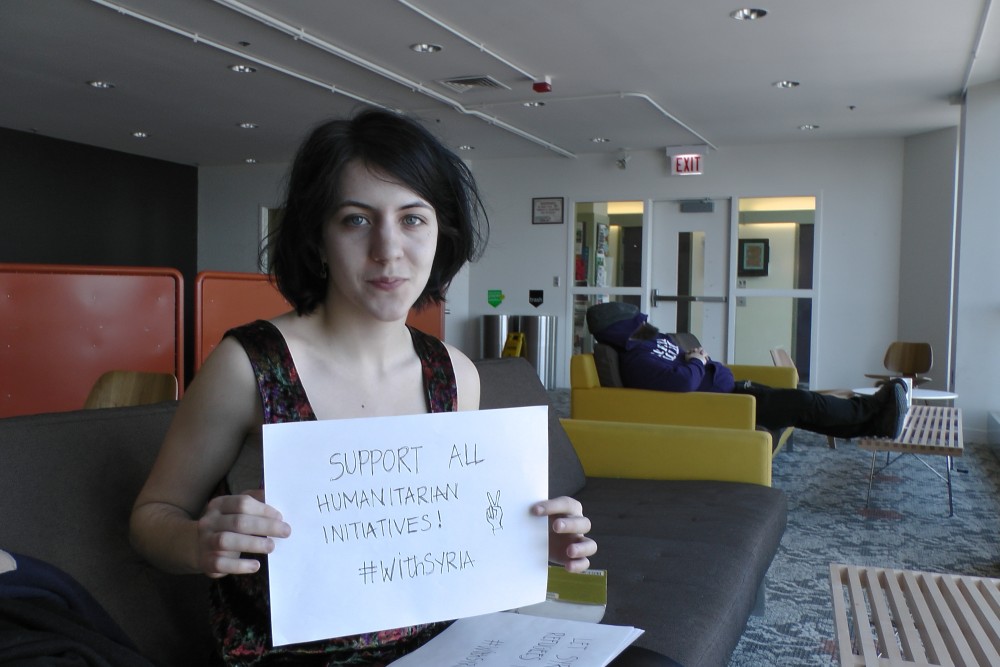A Closer Look at 5 Broken Cameras, an Award-Winning Documentary on Anti-Wall Protests in the West Bank

“Those who have engaged with photography know very well that this moment of the photographic act, which is said to reach its end when incarnated in a final product … is in fact a new beginning that lacks any predictable end.”
—Ariella Azoulai
The last time I participated in a weekly demonstration in Bili’n was in 2011. We walked, as always, down from the village towards the wall. Something was different that day. The court ruling that required the wall to be pushed back had finally, after many long years of persistent struggle, been executed. Now the wall was relocated, freeing roughly 1,600 out of 4,000 acres of land previously owned by the villagers. The “freed” land was scorched black and littered with dusty grenades and teargas canisters. I wondered whether anything could ever grow again on this soil. But what struck me even more was the stench of teargas and the ”skunk,” a weapon developed by the IDF (Israeli Defense Force) for the purpose of dispersion of protesters. The smell lingered, as if it was tattooed to the air from the drenched soil. Like countless times before we were making our way to the wall to protest at its new location, but that day one thing was clear — the way just became longer.
In 2005 Israel began building the separation wall in Bili’n, a small village in the West Bank, which would append a significant part of the land to the neighboring, expanding settlement of Mod’in Ilit. The Popular Struggle Committee in Bili’n organized weekly demonstrations against the construction of the wall, which continue to this day. The people of Bili’n also took their struggle to the Israeli court. In 2007, the court ruled in their favor and in 2011 Israel began the reconstruction of the wall according to its new route.
The documentary film, 5 Broken Cameras, depicts the lives and struggles of the people of Bili’n, from the point of view of Emad Burnat, a Palestinian farmer living in the village. The film is co-directed with Guy Davidi, an Israeli filmmaker who joined Burnat at a later stage in the shooting of the film and the two edited it to- gether. The story in the film commences in 2005, when Burnat receives his first camera to document the life of his newborn son, Gibreel. At the same time, Israel began building the separation wall. The new camera is put to an unexpected use, as Burnat begins to document the people’s struggle against the construction of the wall and the Israeli occupation. This is the starting point for the regular Friday protests — a march from the village to the wall — which have since become an international symbol of the popular struggle.
Burnat’s calm, reassuring, voice begins to unfold his tale — a family life shattered by the destructive ma- chine of the occupation — to a soundtrack of pleasant tunes as well as whistling bullets. The destructive violence against the villagers by soldiers posted to protect the wall becomes apparent over the course of the film. The first camera is shattered by a flying grenade, and the device shields Burnat from a severe injury. The fate of four more cameras will be determined similarly in the course of the next four years. Burnat will not always be so lucky. He might meet a fate similar to one of his friends who was hit in the chest by a teargas canister and died on the spot. As spectators we are called to accompany Emad and bear witness as we watch him face the development of the harsh reality around him. The point cannot be overstressed: this film is not made by a journalist but by a family man who finds himself almost by accident drawn into the circle of violence, carrying his new camera, originally intended to produce home videos. When Basam Abu Rahma is killed, a beloved friend to the filmmaker and his son, one has to wonder if Emad is struck by grief or the sheer regret of having accepted the role of the documentarian in the first place. One of the most heartbreaking moments is when we witness Emad’s son Gibreel’s pain and hatred being born. Already from the opening scenes we are able to foresee that the fate of the cameras anticipates this very moment. It’s only inevitable. “I feel the camera protects me, but it’s an illusion,” Burnat tells the camera as if by accusation.

Nevertheless, Burnat says, “I have to believe that capturing these images will have some meaning.” Becoming a witness is not passive; it is a political act. Everything observed in this sense transforms into testimony. The scorched fields demonstrate an incessant struggle. The shattered cameras physically attest to their instrumental capacity in witnessing social upheaval, not only in the images within them, but in this film the images produced on the cameras’ exteriors. This begs the question, what becomes of the spectators? What capacity do they have if they are not merely observers?
The five broken cameras laid out on the table at the beginning of the film resemble a set of excavated bones, arranged in the form of an archaic organism. Or per- haps they mimic the image of firearms the military has managed to confiscate and now proudly displays as a trophy. As objects, they serve as bare proof of a struggle, a dangerous attempt at reclaiming a life. The cameras themselves, their functionality destroyed, are just as much a testimony as the images they captured. But this is hardly the only transformation by way of inversion that the film calls forth. A fresh father’s attempts at collecting family footage are suddenly deposed as he finds himself turned a documentarian by chance, in the middle of a battle whose end seems to grow ever more distant.
The cameras break each time, whether at the hands of a soldier or a settler or a flying grenade, yet Burnat immediately picks up a new camera and continues to film. Daily life in a Palestinian village: a community leading its routine while extreme realities constantly disrupt it and while in the dead of night, olive trees are burned down by settlers and children are snatched from their homes to be put under custody.
More than anything else, 5 Broken Cameras is about rhythm — the slow, repetitive, ritualistic rhythm of resistance to institutionalized violence and injustice. The editing of the film presents a constructed regularity, which is true to what is portrayed. The five broken cameras aligned on a table speak to the paradoxical nature of progress, and attest to the desperation that is inscribed in small victories. It is precisely when you finally realize a step forward, that the way seems longer than ever.







